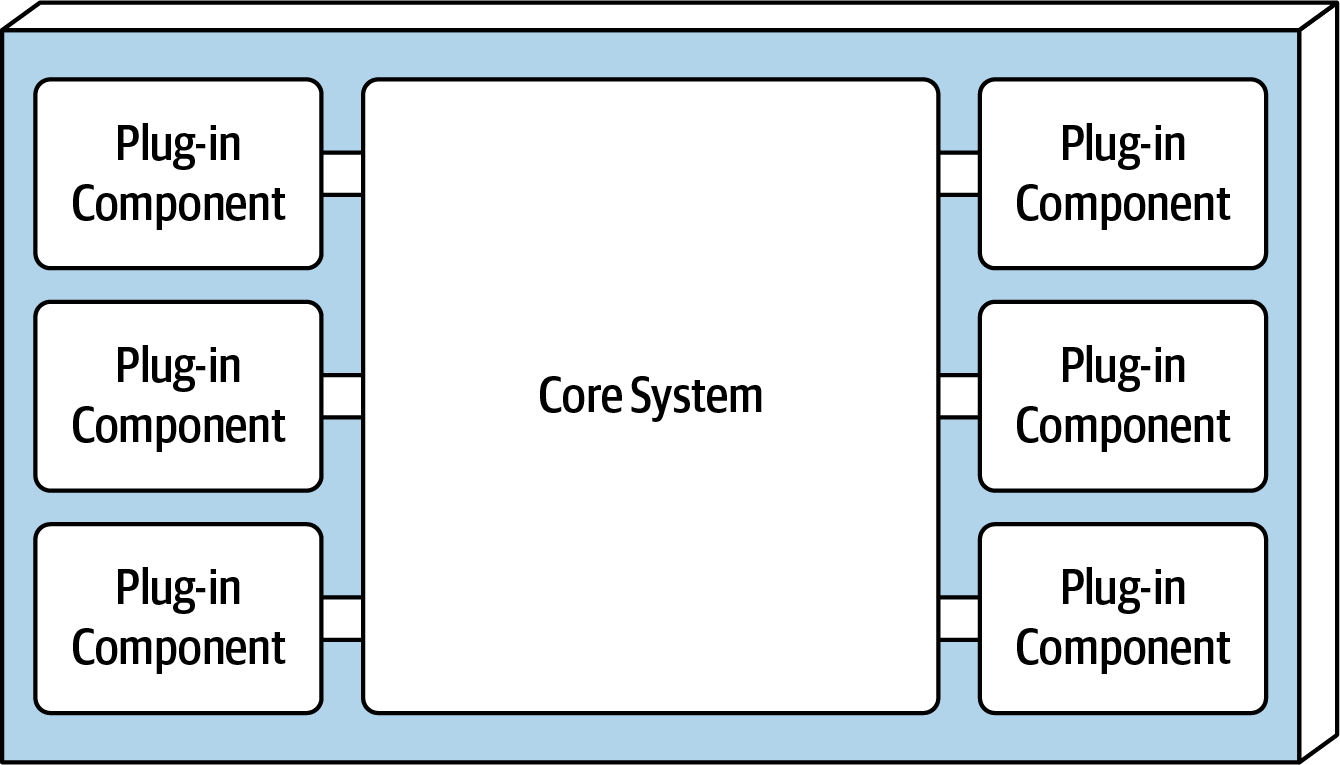Chapter 12. Microkernel Architecture Style
The microkernel architecture style (also referred to as the plug-in architecture) was coined several decades ago and is still widely used today. This architecture style is a natural fit for product-based applications (packaged and made available for download and installation as a single, monolithic deployment, typically installed on the customer’s site as a third-party product) but is widely used in many nonproduct custom business applications as well.
Topology
The microkernel architecture style is a relatively simple monolithic architecture consisting of two architecture components: a core system and plug-in components. Application logic is divided between independent plug-in components and the basic core system, providing extensibility, adaptability, and isolation of application features and custom processing logic. Figure 12-1 illustrates the basic topology of the microkernel architecture style.

Figure 12-1. Basic components of the microkernel architecture style
Core System
The core system is formally defined as the minimal functionality required to run the system. The Eclipse IDE is a good example of this. The core system of Eclipse is just a basic text editor: open a file, change some text, and save the file. It’s not until you add plug-ins that Eclipse starts becoming a usable product. However, another definition of the core ...